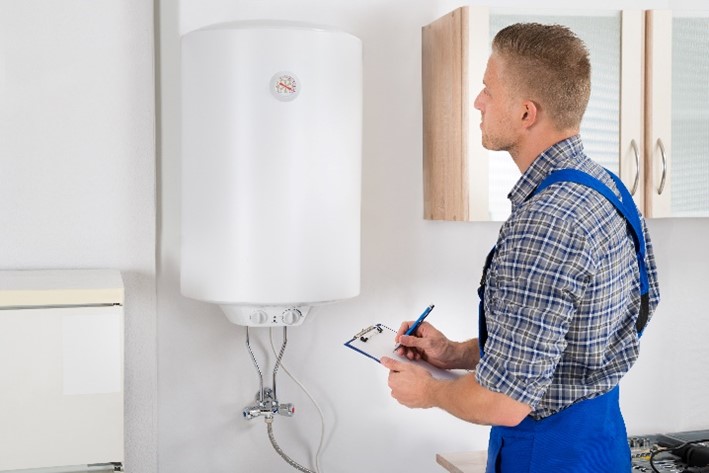Caring for Your Home's Hot Water System: Key Guidelines
Caring for Your Home's Hot Water System: Key Guidelines
Blog Article
Just how do you feel on the subject of What Kind of Maintenance Do Water Heaters Need??
:max_bytes(150000):strip_icc()/tankless-hot-water-system-in-the-basement-of-a-green-technology-home-529577258-77afda16fd494c6899a78000888c3204.jpg)
Warm water is vital for daily convenience, whether it's for a refreshing shower or washing recipes. To guarantee your hot water system runs successfully and lasts longer, routine upkeep is crucial. This article supplies practical suggestions and understandings on just how to keep your home's hot water system to stay clear of disruptions and expensive fixings.
Introduction
Preserving your home's warm water system could seem overwhelming, but with a couple of straightforward steps, you can guarantee it runs smoothly for several years ahead. This guide covers whatever from recognizing your warm water system to DIY upkeep pointers and knowing when to contact specialist aid.
Importance of Preserving Your Warm Water System
Regular maintenance not just expands the life-span of your warm water system but likewise guarantees it runs efficiently. Neglecting maintenance can result in lowered performance, higher energy expenses, and also early failure of the system.
Indications Your Warm Water System Demands Upkeep
Knowing when your hot water system needs focus can protect against major issues. Watch out for indications such as irregular water temperature level, odd sounds from the heating system, or rusty water.
Understanding Your Hot Water System
Before diving right into upkeep jobs, it's handy to comprehend the standard parts of your warm water system. Typically, this includes the water heater itself, pipes, anode rods, and temperature controls.
Regular Monthly Maintenance Tasks
Routine regular monthly checks can assist capture small concerns prior to they intensify.
Flushing the Water Heater
Flushing your water heater eliminates sediment accumulation, enhancing effectiveness and extending its life.
Checking and Replacing Anode Rods
Anode rods avoid rust inside the storage tank. Examining and replacing them when worn out is essential.
Examining and Adjusting Temperature Setups
Readjusting the temperature level setups makes certain optimum efficiency and security.
DIY Tips for Maintenance
You can perform several upkeep jobs on your own to keep your hot water system in leading problem.
Looking for Leaks
Routinely inspect pipelines and links for leaks, as these can lead to water damage and higher bills.
Examining Stress Relief Valves
Testing the stress safety valve ensures it functions correctly and protects against excessive pressure build-up.
Protecting Pipes
Insulating warm water pipes reduces warm loss and can save power.
When to Call a Specialist
While DIY maintenance is valuable, some problems require professional experience.
Complicated Issues Calling For Expert Help
Instances include major leakages, electrical troubles, or if your water heater is consistently underperforming.
Regular Expert Upkeep Perks
Professional upkeep can include detailed evaluations, tune-ups, and making sure conformity with security standards.
Final thought
Regular upkeep of your home's hot water system is necessary for effectiveness, long life, and expense financial savings. By complying with these pointers and understanding when to look for expert aid, you can guarantee a reliable supply of hot water without unanticipated disruptions.
How to Maintain an Instant Hot Water Heater
Before tinkering with your hot water heater, make sure that it’s not powered on. You also have to turn off the main circuit breaker and shut off the main gas line to prevent accidents. Also turn off the water valves connected to your unit to prevent water from flowing into and out of the appliance. 2. When you’re done, you have to detach the purge valves’ caps. These look like the letter “T†and are situated on either side of the water valves. Doing so will release any pressure that has accumulated inside the valves while at the same time avoid hot water from shooting out and burning your skin. 3. When the purge valves’ caps are removed, you have to connect your hosing lines to the valves. Your unit should have come with three hoses but if it didn’t, you can purchase these things from any hardware or home repair shops. You can also get them from retail stores that sell water heating systems. Read the user’s manual and follow it to complete this task properly. When the hosing lines are connected, open the purge port’s valves. 4. You should never use harsh chemical cleaners or solutions when cleaning your unit. Make use of white vinegar instead. It should be undiluted and you’ll probably use about 2 gallons. 5. Now flush your water heater. This task should probably take about 40 minutes. We can’t give you specific directions for this because the procedure is carried out depending on the type, model and brand of your heater. With that being said, refer to the user’s manual. 6. When you’re done draining the unit, you have to turn off the purge port valves again. Remove the hosing lines that you earlier installed on each of the water valves. Put the valve caps (purge port) back in their respective places and be very careful so as not to damage the rubber discs that are found inside these caps. 7. Now that everything’s back in place, check your user’s manual again to find out how to reactivate your water heating system. 8. Once it is working, turn one of your hot water faucets on just to let air pass through the heater’s water supply pipes. Leave the tap on until water flows smoothly out of it. https://www.orrplumbing.com/blog/2014/september/how-to-maintain-an-instant-hot-water-heater/

Hopefully you enjoyed reading our post about Tips on Maintaining a Water Heater. Thanks a ton for taking a few minutes to read our piece. Appreciated our write up? Please quickly share it. Let others locate it. Kudos for being here. Revisit us soon.
This Page Report this page